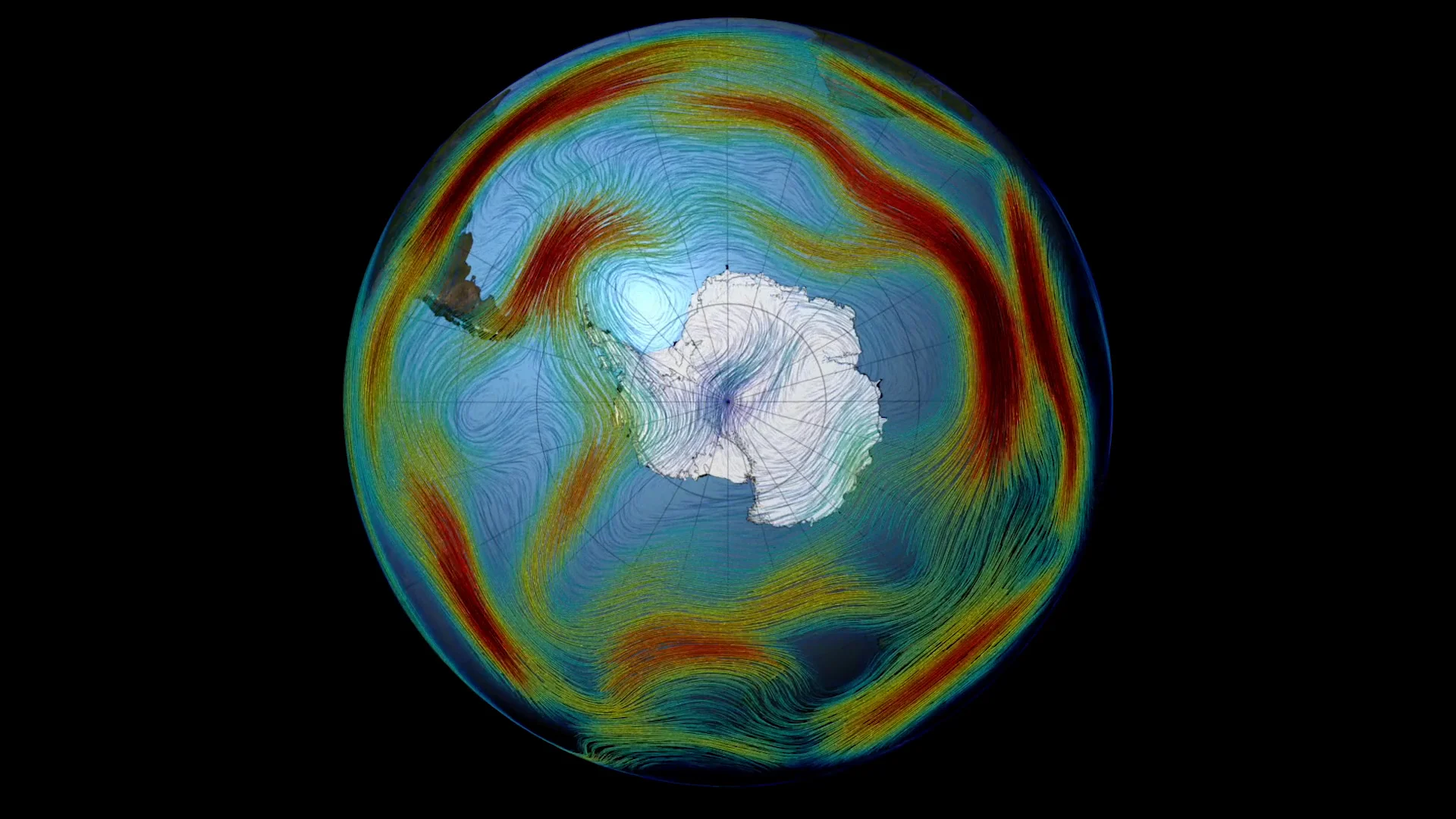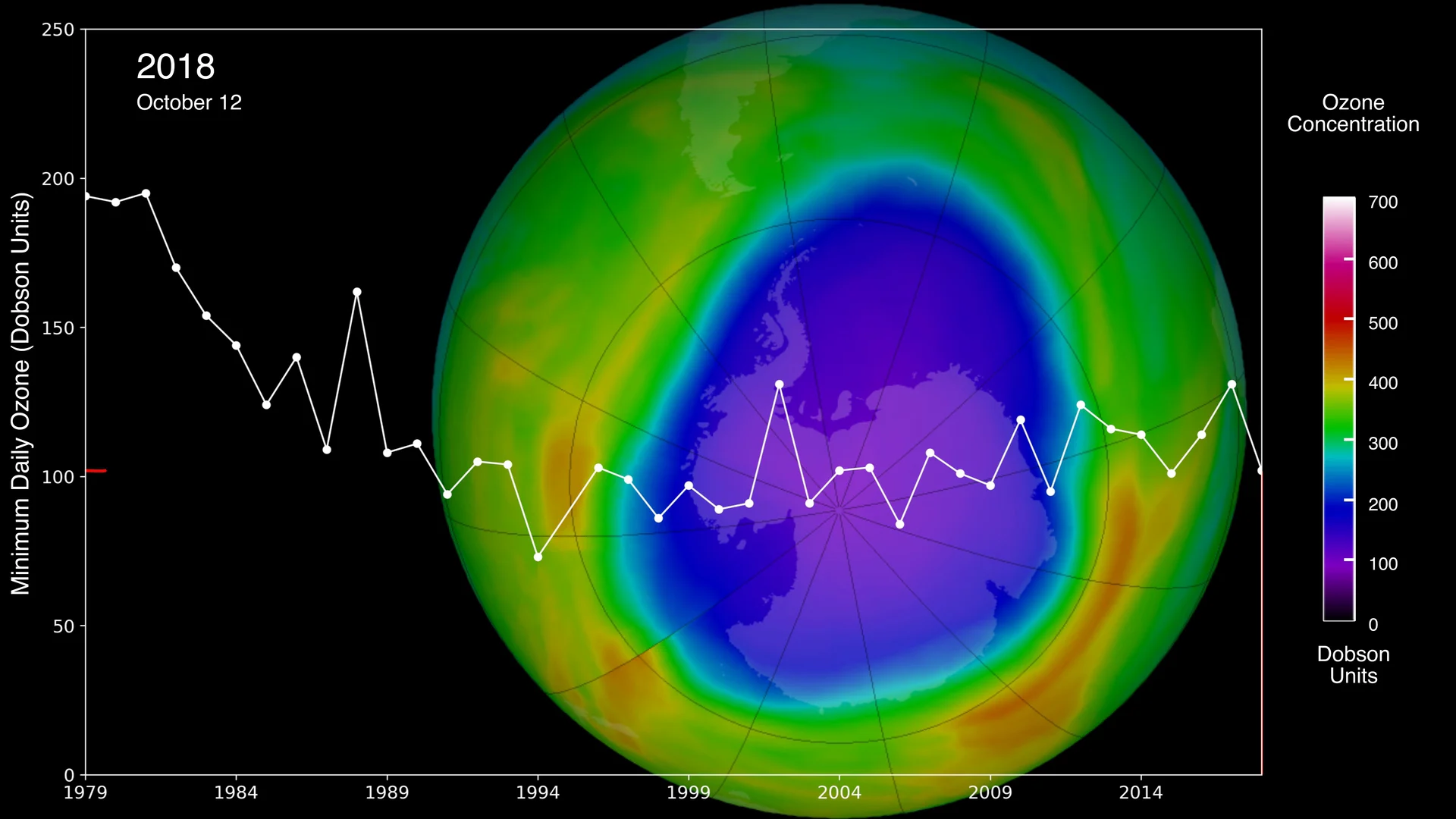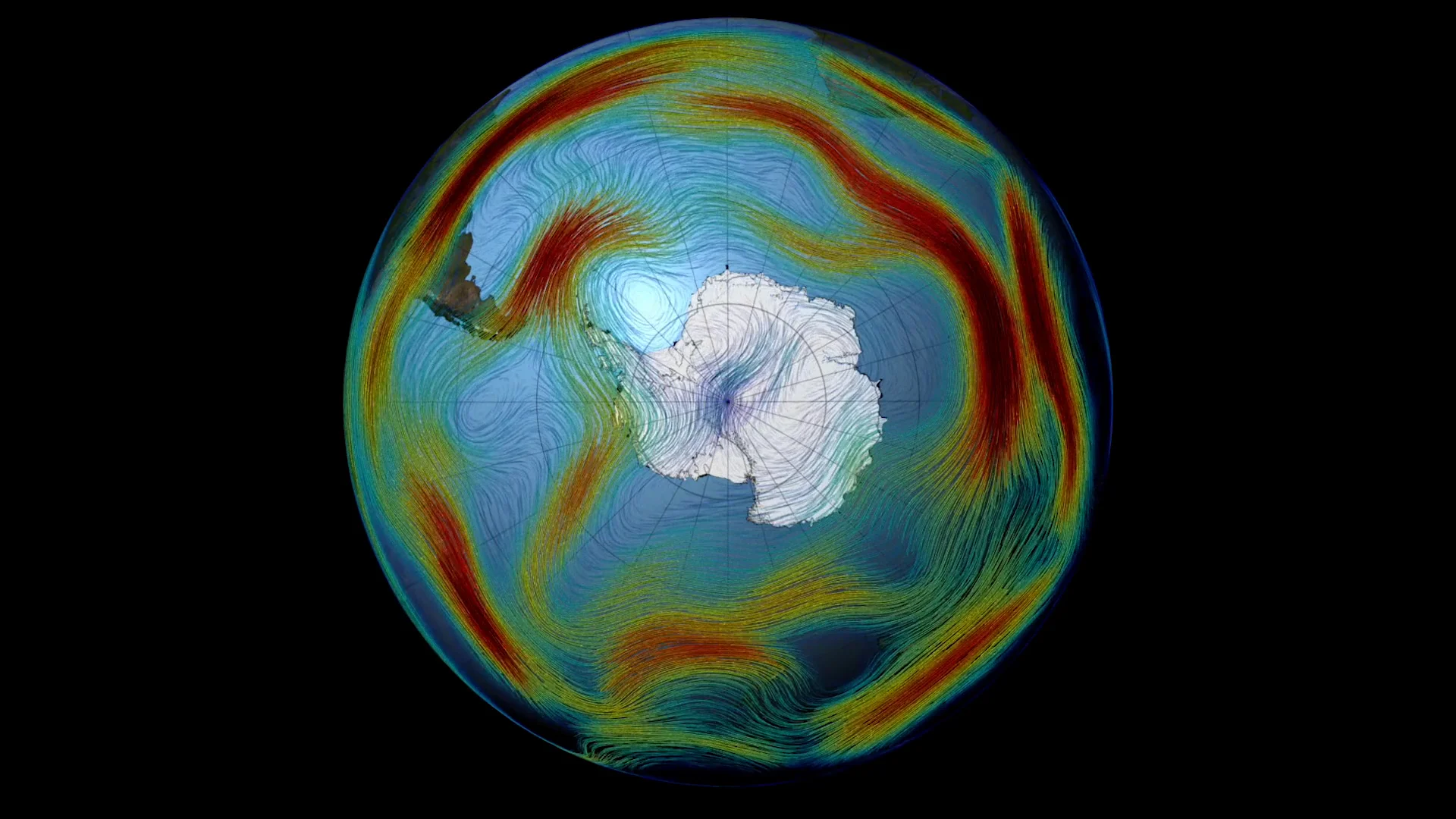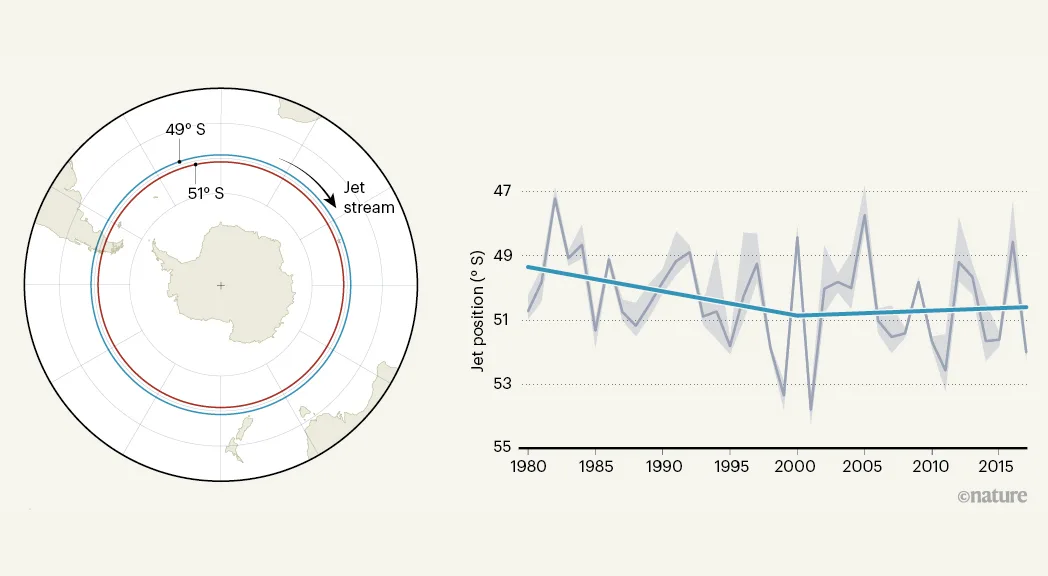
The Ozone Hole's recovery is helping stabilize southern hemisphere weather
The Montreal Protocol isn't just saving the ozone layer, it is helping southern hemisphere weather return to normal
When the world's leaders signed the Montreal Protocol in the late 1980s, the goal was to prevent the destruction of Earth's ozone layer, but we are now seeing other positive effects from this international agreement.
According to a new study, published in the journal Nature, the healing ozone hole appears to be helping restore weather patterns as well.
"This study adds to growing evidence showing the profound effectiveness of the Montreal Protocol," Antara Banerjee, the lead author of the study from the University of Colorado Boulder and NOAA, said in a press release. "Not only has the treaty spurred healing of the ozone layer, it's also driving recent changes in Southern Hemisphere air circulation patterns."

The October 2019 monthly average ozone hole was one of the smallest ever seen. Credit: NASA Ozone Watch
After the ban on chlorofluorocarbon (CFC) chemicals, starting with the Montreal Protocol on Substances that Deplete the Ozone Layer, scientists have been closely observing the Antarctic ozone hole. They not only monitor the size and severity of each year's ozone hole, they keep track of the weather conditions associated with it. They also watch how it influences the weather patterns around it and beyond.
Throughout the 1980s and 1990s, as the ozone hole continued to grow in size and severity, researchers noted a very specific trend. The jet stream patterns around the southern hemisphere were changing due to the ozone depletion.

The minimum daily ozone of the year, from 1979-2018, is shown in this graph. Lower the minimum value, in Dobson units, equates to a larger ozone hole area. Credit: NASA's Goddard Space Flight Center
Ozone production heats the upper levels of the stratosphere. With the increased ozone depletion, this cooled the stratosphere. A cooler stratosphere, in turn, caused the polar jet stream to blow stronger and shift farther south, tightning it up around the south pole. Along with it, the mid-latitude jet stream, which flows around the hemisphere closer to the tropics, also shifted farther to the south.
At the same time, scientists noted that the increasing carbon dioxide emissions from fossil fuels were contributing to this trend. With more carbon dioxide trapping heat in the troposphere, that heat is prevented from reaching higher up. Thus the stratospheric ends up even colder, which strengthens the polar jet stream even more.

Simulated southern hemisphere polar and mid-latitude jet streams. Blues and greens represent the lightest winds. Reds represent the strongest winds, that are part of the flow of the jet streams. In general, the faster the flow, the more 'zonal' it will be, and the weaker the flow, the more it will tend to 'loop'. Credit: NASA's Goddard Space Flight Center
With the southward shift of both the polar and mid-latitude jet streams, rainfall patterns were altered, and the sub-tropical dry regions were also shifting farther south. This was impacting weather across South America, East Africa and Australia.
Separating out the individual contributions of carbon dioxide and ozone depletion on the jet stream flow, Banerjee and her team - which included researchers from Environment and Climate Change Canada, Columbia University, Johns Hopkins University, and the University of New South Wales - were able to show a connection between the recovery of the ozone hole over the past 20 years, and a slight northward shift of the jet streams over that same span of time.
"Identifying the ozone-driven pause in circulation trends in real-world observations confirms, for the first time, what the scientific ozone community has long predicted from theory," John Fyfe, a study co-author from Environment and Climate Change Canada, said in the UC Boulder press release.

The map (left) shows the average latitude of the southern polar jet stream. While these averages form perfect circles, in real-time, the jet stream forms loops and wiggles in the flow. The graph (right) shows the latitude of the jet stream over time. Credit: Nature/Banerjee, et al.
While there is a definite northern shift seen in latitude of the jet stream over the past two decades, and it can be linked to the recovery of the ozone layer, the researchers identify this only as a 'pause' in the southward shift of the jet stream. The reason for this is that human activity continues to increase the amount of carbon dioxide in the atmosphere at an alarming rate. Thus, even as the contribution of ozone depletion diminishes, the contribution of carbon dioxide to the poleward shift in the jet stream continues to grow stronger.
With the success of the Montreal Protocol, now seen with both ozone recovery and weather patterns, it points to how large-scale global agreements like this can have significan impacts. The Paris Agreement now is our best bet for putting the poleward shift in southern hemisphere weather patterns completely on hold, and eventually returning them to normal.
Sources: UC Boulder | Nature











